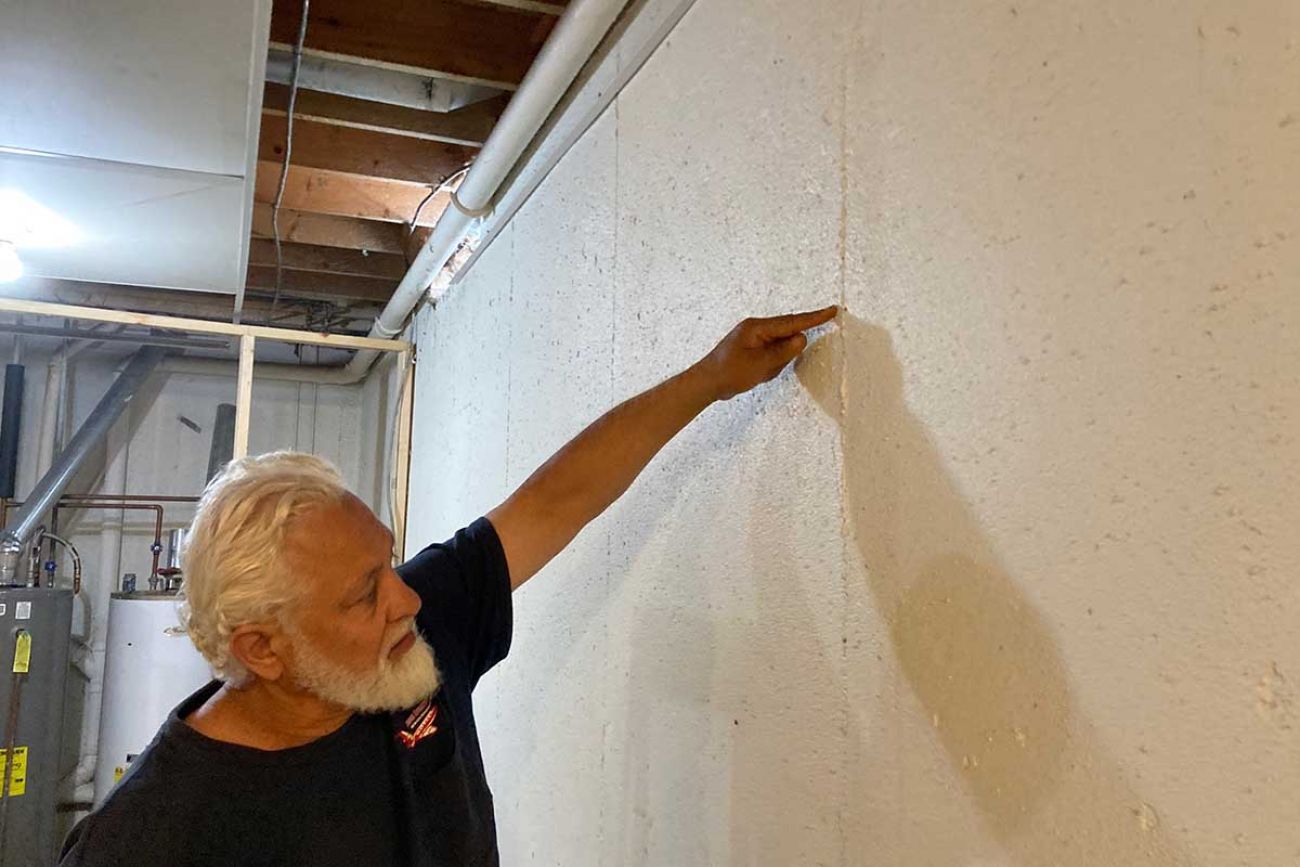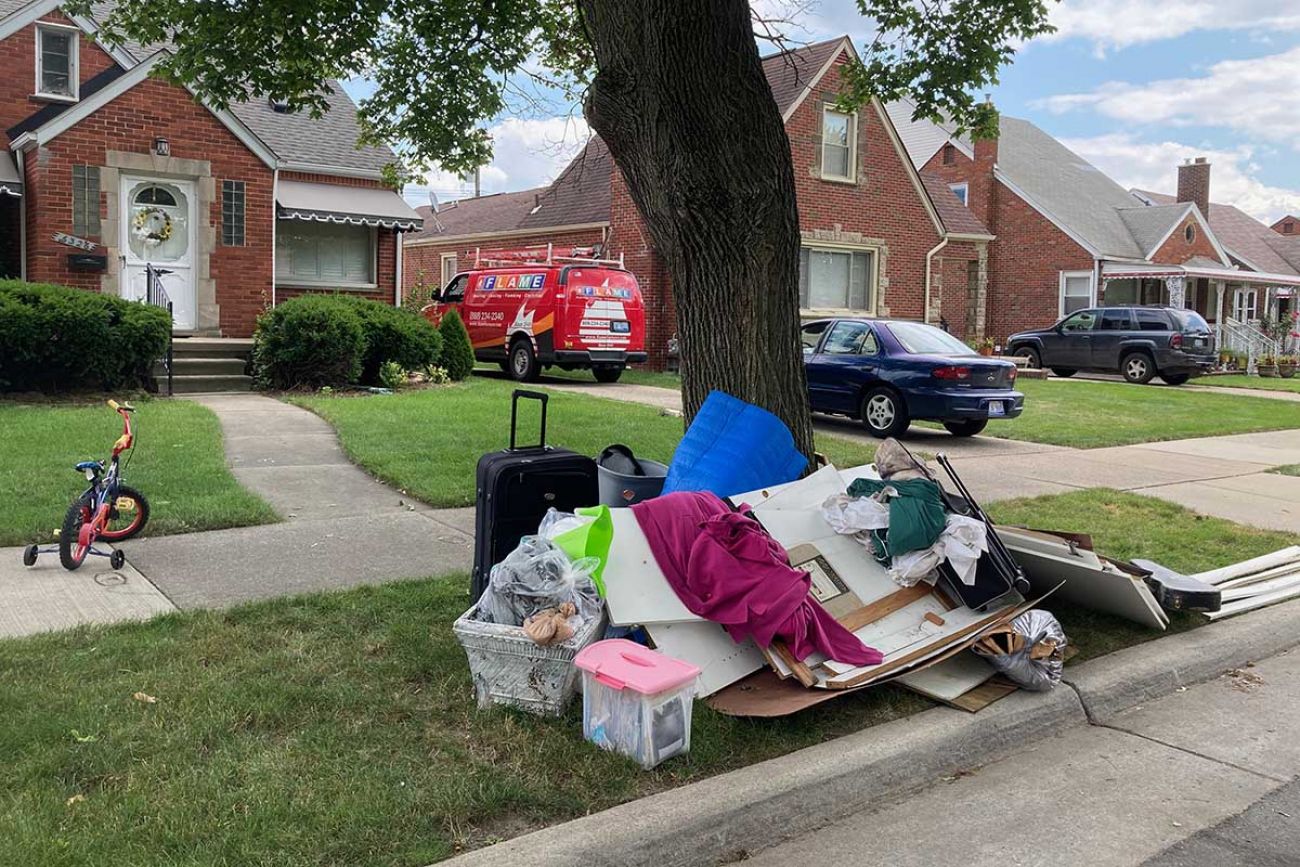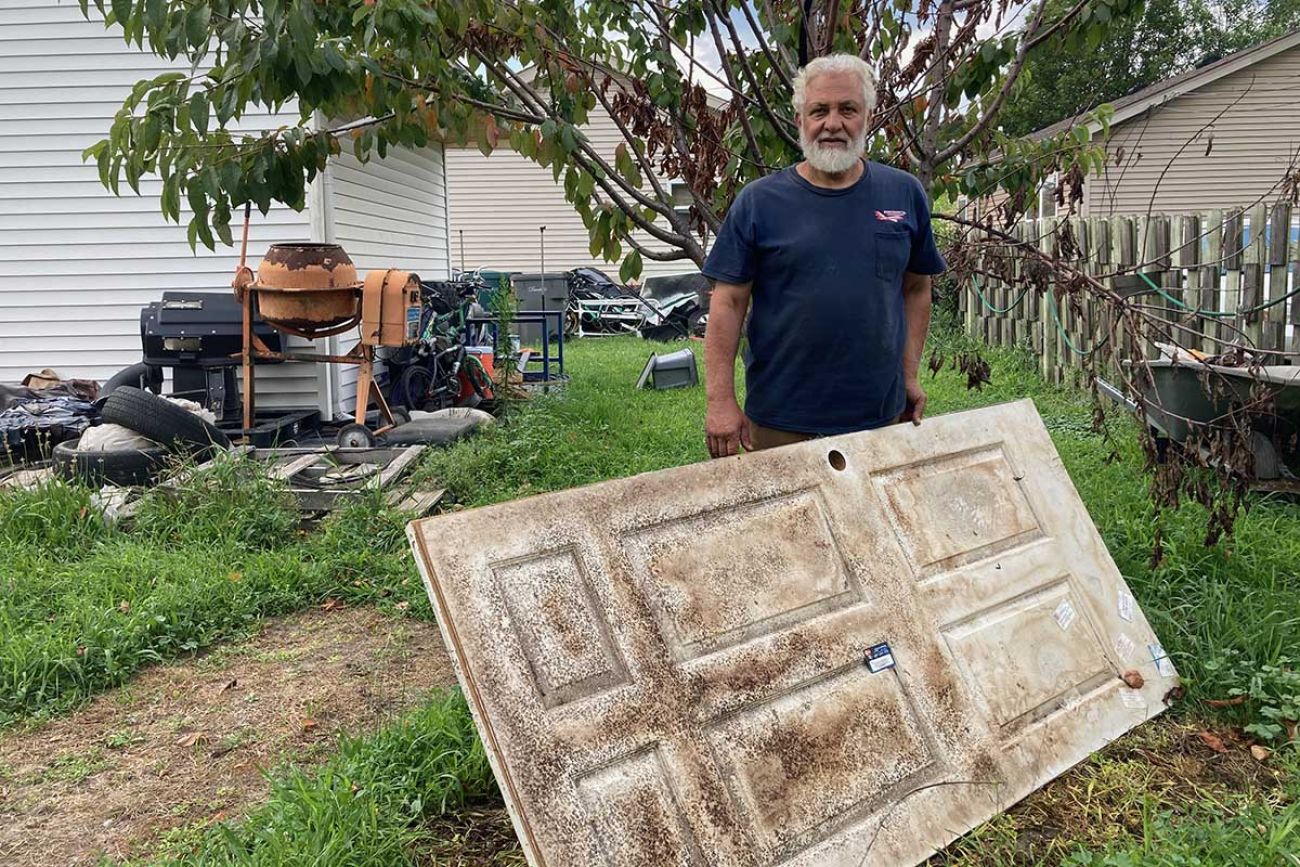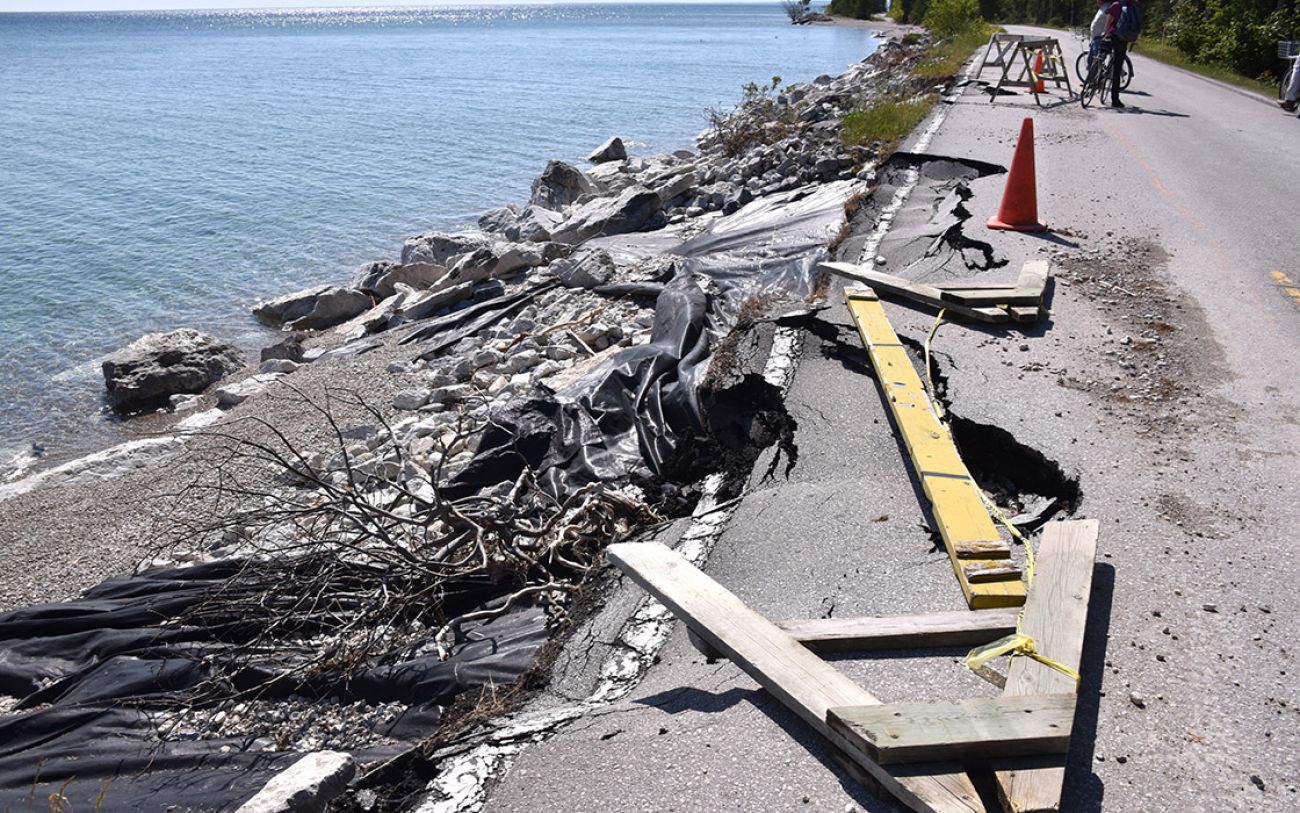Michigan’s soggy summer evidence of a global climate reckoning

DEARBORN—Mohammad Al Hajmoussa thought he was done with natural disasters when he fled Louisiana after Hurricane Rita to resettle on Dearborn’s south end.
“But I ran away from the hurricanes and ended up here,” he said, standing in a gutted basement that smelled faintly of mildew.
Al Hajmoussa’s home was among tens of thousands damaged when a series of severe storms hit southeast Michigan this summer. The worst of them — a “thousand year” rainstorm that lasted several hours on the night of June 25 — dropped as much as seven inches into a sewer system built to drain no more than three inches in 24 hours.
Related:
- Smoke from wildfires making Michigan’s sunsets even more vibrant
- Health officials: Climate change threat to Michigan. But few make it priority.
- Monarch butterflies decimated. How climate change is killing them in Michigan
- Yes, mosquitoes are worse in Michigan this summer. And it ain’t over
“We believe our systems operated as designed, but were overwhelmed,” Dearborn city spokesperson Mary Laundroche told Bridge Michigan.
Welcome to Michigan’s new climate reality.
The Dearborn flooding joins a long list of natural disasters that happened in quick succession this summer: As flash floods in Germany killed more than 180 people, an early-season wildfire was consuming hundreds of thousands of acres in Oregon following the hottest weather the Pacific Northwest has ever seen, and the massive water reservoirs that quench the desert Southwest were hitting record lows.

Though it’s hard to tease out the role of climate change in any single weather event, long-term monitoring has shown that intense rainstorms like the ones that bore down on Southeast Michigan this year (and mid-Michigan last year, and the Upper Peninsula in 2018, and mid-Michigan in 2017, and metro Detroit in 2014) are growing more common. And are expected to worsen.
And yet our infrastructure and the policy that guides it — from the pipes that whisk water away, to the standards that dictate where and how we build homes — are calibrated to patterns of the past.
“Whether it's a house, a sewage system, a dam, your farm: They're all designed for a climate that doesn't exist anymore,” said Jonathan Overpeck, a climate scientist at the University of Michigan.
When the water finally drained from his home in Dearborn, Al Hajmoussa peeled away sodden drywall to discover another crisis: Fissures in the foundation of his 19-year-old house, the result, he believes, of hydraulic pressure from the waterlogged soil.
“Now, every time it rains,” he said, “water comes through the cracks.”

Al Hajmoussa’s experience represents a broader reality: The cost of climate change — and society’s failure to prepare for it — is raising the price tag for meaningful solutions in Michigan.
Consider: The flood that triggered last year’s Edenville Dam failure inflicted $200 million in private property damage. Flooding in 2018 in Houghton County caused $100 million in damage to public infrastructure alone. In 2014, the bill for catastrophic flooding in Detroit was $1.8 billion. And local officials in eight states and two Canadian provinces anticipate spending $2 billion to recover from the recent record-high water levels that damaged coastal areas across the Great Lakes.
As of mid-July, the Federal Emergency Management Agency had already approved $51.3 million in assistance to victims of this year’s southeast Michigan floods.

Climate experts have warned for decades that the only way to avoid ever-more-dire consequences is to rapidly cease burning fossil fuels. But political and business leaders have been slow to heed those warnings.
Now, said Beth Gibbons, executive director of the American Society of Adaptation Professionals in Ypsilanti, which helps professionals prepare for climate change, “we're getting a really painful look at the reality that we've been moving toward for a long time.”
According to a landmark global assessment released Monday, extreme weather will get worse over the next three decades even if humanity becomes carbon neutral by 2050 (a best-case scenario that the globe’s largest emitters are not on track to meet).
Floods are just the beginning.
The smoke from Western wildfires is polluting Michigan’s air. Left unchecked, Overpeck said, climate change will amplify wildfire risks here, too. Our summers will become increasingly hot and humid. Our winters, warmer and stormier. Then there are the secondary effects: worsening disease outbreaks, harsher allergy seasons and collapsing fish and wildlife populations.

A study published last month by a researcher at Columbia University's Earth Institute put the worldwide mortality cost of carbon from heat alone at 83 million people this century if greenhouse gas emissions continue unabated. And there’s growing scientific consensus that areas from Miami to the Middle East will become uninhabitable due to sea level rise and worsening heat.
Overpeck said Michigan and the world still have time to avoid that fate. If we rapidly decarbonize our economy and recalibrate our infrastructure for a changing climate, the Great Lakes region is positioned to withstand climate change better than the world’s arid and coastal regions.
Overpeck said swift climate action can also produce secondary benefits, such as improved air quality as fossil fuel-powered automobiles and power plants are replaced by electric vehicles and solar and wind energy.
But if we don’t act?
“We're going to continue to get hammered, over and over and over.”
‘Not a problem until it’s in my backyard’
Keith Cooley was a member of then-Gov. Jennifer Granholm’s cabinet in 2007 and 2008, when climate change was emerging as a state policy priority.
Scientists had by then been warning about the impacts of climate change for decades, but Consumers Energy was still planning to build new coal plants in Michigan (now, the company plans to stop burning coal by 2025). The gas-guzzling Hummer SUV was wildly popular. And then-President George W. Bush had vowed not to implement the Kyoto Protocol, a global agreement to curb greenhouse gas emissions.
As the Granholm administration negotiated legislation requiring electric providers to start transitioning to renewable energy, Cooley said they aimed for 15 percent by 2015. By the time the bill reached public view, he said, the goal had been “beat down to 10 percent” because a higher standard would not have passed in the Legislature.
Lack of political support also tempered the ambition of Michigan’s 2009 Climate Action Plan, and led voters to reject a 2012 ballot measure that would have required Michigan to get 25 percent of its electricity from renewables by 2025.
At the time, said Frank Ettawageshik, executive director of the United Tribes of Michigan and a longtime climate activist who helped craft Michigan’s first climate plan, “just getting as far as we did was a huge leap for a lot of people.”
But in the past few years, global warming has begun to play out in wildfires, flooding and record temperatures that people could see and feel, and the public dialogue has shifted dramatically. Even without a government mandate, some automakers set their own timelines to stop selling gas-powered cars. And Michigan’s biggest utilities (Consumers Energy and DTE) have vowed to become carbon neutral by midcentury.
Cooley, who now runs a consulting business focused on labor and the energy transition, said he has watched colleagues across the political spectrum increasingly embrace the need for an energy transition — even if they may still avoid using the term “climate change” to describe what’s happening.
One example: In late July, Congress announced plans to pass a bipartisan $550 billion infrastructure deal that includes money to prepare for and respond to natural disasters. Among a host of priorities it would fund: Electric vehicle adoption and upgrades to U.S. roads, bridges and water and power infrastructure.
But the plan is less than a quarter of Biden’s original $2.6 trillion proposal, and climate activists say it’s far too lean to meet America’s climate challenge. They’re now pressing Democrats to pass an additional $3.5 trillion proposal to fund priorities that were left out of the still-to-be-passed bipartisan package.
Meanwhile, the few Republicans who support the bipartisan infrastructure package describe it as an overdue investment in America’s decrepit roads and bridges — not an act of climate preparation.
"Republicans and Democrats have radically different visions these days. But both those visions include physical infrastructure that works for our citizens," said Senate Minority Leader Mitch McConnell, R-Kentucky, in remarks Saturday on the Senate floor.
In Michigan, Gov. Gretchen Whitmer and many Democratic legislators have been vocal about the link between recent flooding disasters and the global climate crisis.
During a press conference in the wake of the flooding, Whitmer said Michigan must protect itself from future disasters by “doing everything we can to address climate change and build resilient infrastructure.”
Rep. Abdullah Hammoud, D-Dearborn, said he and fellow Democratic lawmakers plan to introduce policy and spending proposals in the coming weeks to address Michigan’s infrastructure needs.
“We might not be able to prevent the levels of rain that we're seeing,” he said, “but we can prevent the flooding if we make smart investments.”
Republican leaders, while more hesitant to link recent floods to human-caused climate change, have advocated spending billions of federal COVID relief dollars to address weaknesses in Michigan’s roads, bridges, dams and water systems.
Sen. Wayne Schmidt, a Republican from Traverse City who introduced a bill to spend $1.63 billion of Michigan’s stimulus money on bridges, rail and other needs, told Bridge Michigan Monday that climate change is putting additional strain on the state’s infrastructure.
“There is an impact, and it's going to continue, we need to address that,” Schmidt said.
Abby Walls, spokesperson for state Senate Majority Leader Mike Shirkey, acknowledged in an email to Bridge that Michigan’s infrastructure “needs to be able to withstand 200-, 500-, 1000- year weather events.”
And GOP Sen. Tom Barrett, who chairs the Senate Transportation and Infrastructure Committee, said Michigan’s infrastructure should be “as resilient as possible.”
A spokesperson for Speaker of the House Jason Wentworth declined to comment.
Environmentalists say those state and federal developments represent welcome, if insufficient and belated, progress.
Climate inaction meets infrastructure neglect
Because earlier climate efforts came up short, experts say society now faces tandem challenges: Stopping emissions as quickly as possible, while responding to climate disasters that will grow increasingly severe until emissions plummet.
In Michigan, the challenge is compounded by longstanding state disinvestment in roads, bridges, water systems and other infrastructure. Already crumbling from neglect, these aging public assets now face strain from storms they weren’t designed to withstand in the first place.
Those who have contributed least to the climate crisis — the poor, who have far smaller carbon footprints — will suffer first and worst because they can least afford expensive reinforcements or relocation out of harm’s way.
Gibbons, the climate adaptation expert, put it this way: “We have a risk that is exacerbated because of our failure to take care of the public good for the last 40 years, 50 years — or for some people, ever.”
Take, for instance, the metro Detroit section of I-94 that becomes a car-swallowing lake during extreme floods. The Michigan Department of Transportation is planning to modernize the freeway, including new drainage systems to better prevent flooding.
But where should the water go instead?
“That (I-94) storm sewer connects into an overall stormwater and sanitary sewage management system that ... is 100 years old,” said Hal Zweng, who manages MDOT’s environmental compliance section.
Heavy rainfall frequently overwhelms those sewers, sending water spewing into streets and homes. Fixing the flooded freeway may exacerbate flooding elsewhere.
Zweng said MDOT officials meet weekly with the Great Lakes Water Authority and other water managers in hopes of finding a solution.
The authority plans to spend $1.7 billion over the next five years to improve its water system. But in a metro area built on top of drained wetlands, it’s unclear whether any engineered solution, from bigger pipes and pumping systems to more stormwater catchment ponds, can eliminate flooding as climate change makes the region stormier.
Such conundrums are becoming more common across the state. MDOT has spent millions of dollars shoring up state coastal roads against encroaching waves. Among them: The section of M-25 near Port Austin, which recently underwent major reconstruction.
“It’s stable for now,” Zweng said. “But at some point, we can’t keep reinforcing it.” When that day comes, the road will need to be moved further inland.
If continued flooding is inevitable, state and federal policy changes may be needed to help residents adapt, said Gibbons, of the climate change adaptation group.
One example: Changing the way federal agencies dole out disaster relief money.
FEMA typically pays homeowners just enough to make their home livable again. A bandage, in other words, not a solution. It typically doesn’t pay to install sump pumps or weather stripping, the kind of costly but necessary improvements that could prevent damage during the next rainstorm.
Gibbons called it an “archaic approach” that fails to recognize today’s storms for what they are: Not freak disasters, but a new normal.
It’s also an inefficient use of money: The federal government estimates that every dollar spent to prepare for disasters saves $6 by avoiding future disaster recovery costs.
Until and unless such policy changes arrive, experts said Michiganders should take steps to prepare themselves. For Gibbons, that meant buying a house without a basement when her family recently moved.
Michigan Farm Bureau officials said farmers are beginning to plant earlier in the spring, and install irrigation systems to withstand droughts and drain tiles to prevent floods. Tribes, doubting that some of Michigan’s native fish will survive climate change, have become less species-specific when negotiating their treaty-protected fishing rights, Ettawageshik said.
In Dearborn, Al Hajmoussa and his neighbors are considering how they’ll adapt, too.
Laymoon Yahya, who lives next door, said she will make only basic repairs. She’ll also invest in flood insurance and a generator.
And “I’ll never, ever, put anything expensive down there,” Yahya said of her basement.
Al Hajmoussa has other ideas. He has talked with a real estate agent about putting his house up for sale. If he gets a good offer, he said, he’ll use the money to finance a move.
“Please get me out of Dearborn,” he said. “Anywhere dry.”
Michigan Environment Watch
Michigan Environment Watch examines how public policy, industry, and other factors interact with the state’s trove of natural resources.
- See full coverage
- Subscribe
- Share tips and questions with Bridge environment reporter Kelly House
Michigan Environment Watch is made possible by generous financial support from:
Our generous Environment Watch underwriters encourage Bridge Michigan readers to also support civic journalism by becoming Bridge members. Please consider joining today.
See what new members are saying about why they donated to Bridge Michigan:
- “In order for this information to be accurate and unbiased it must be underwritten by its readers, not by special interests.” - Larry S.
- “Not many other media sources report on the topics Bridge does.” - Susan B.
- “Your journalism is outstanding and rare these days.” - Mark S.
If you want to ensure the future of nonpartisan, nonprofit Michigan journalism, please become a member today. You, too, will be asked why you donated and maybe we'll feature your quote next time!






